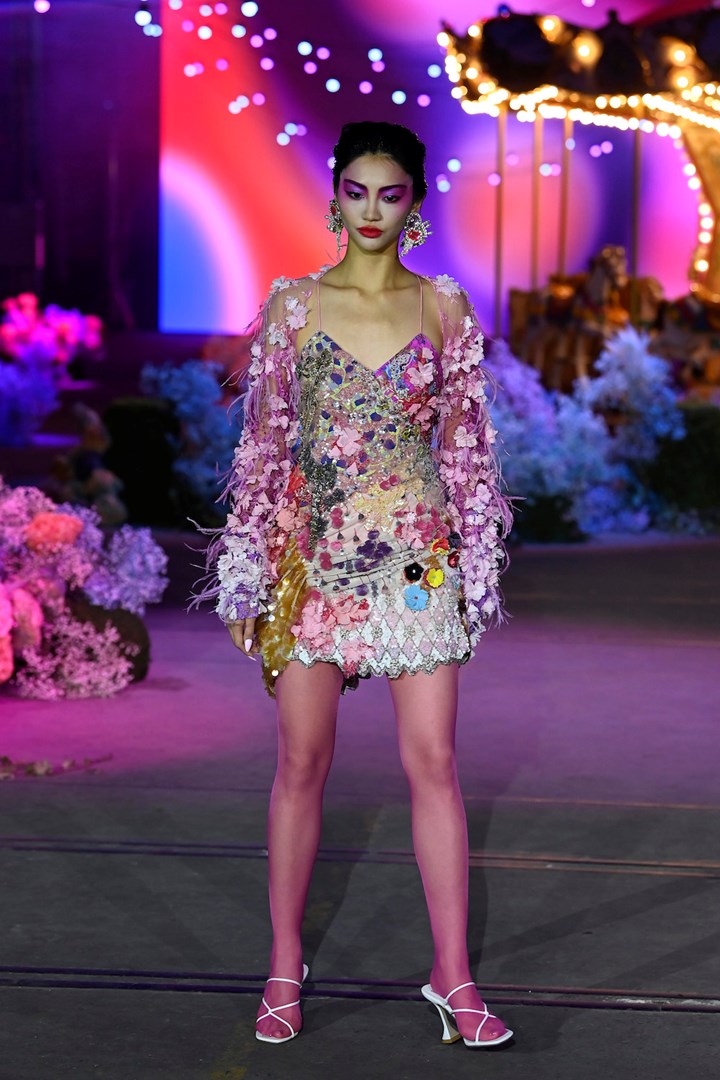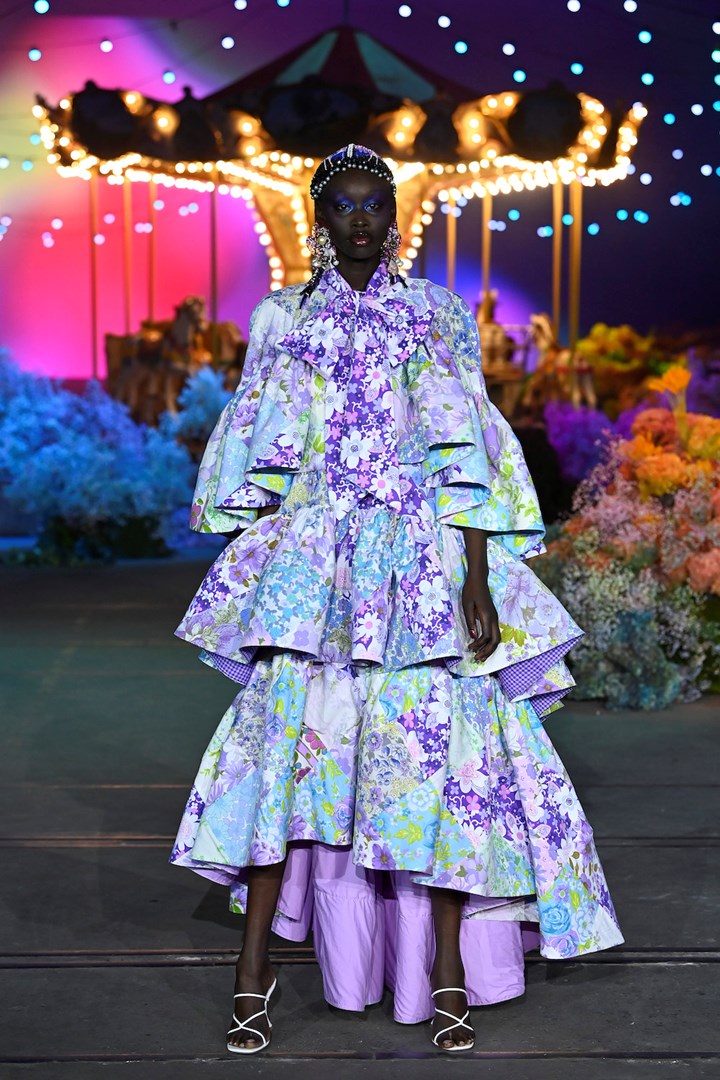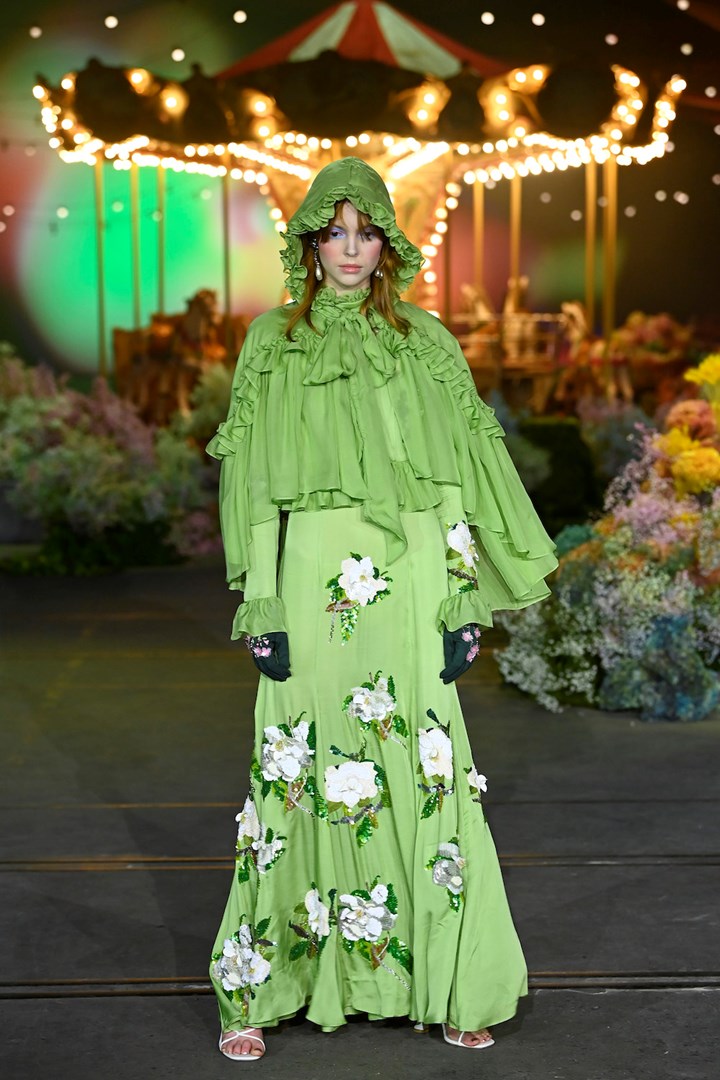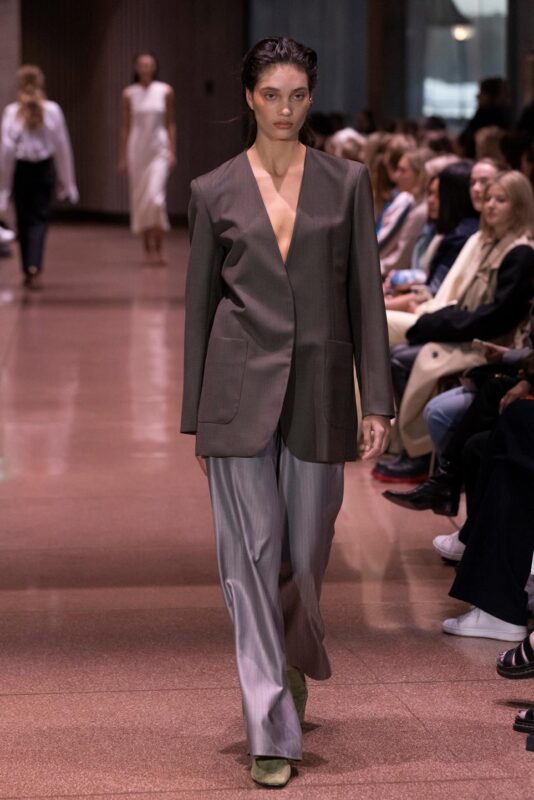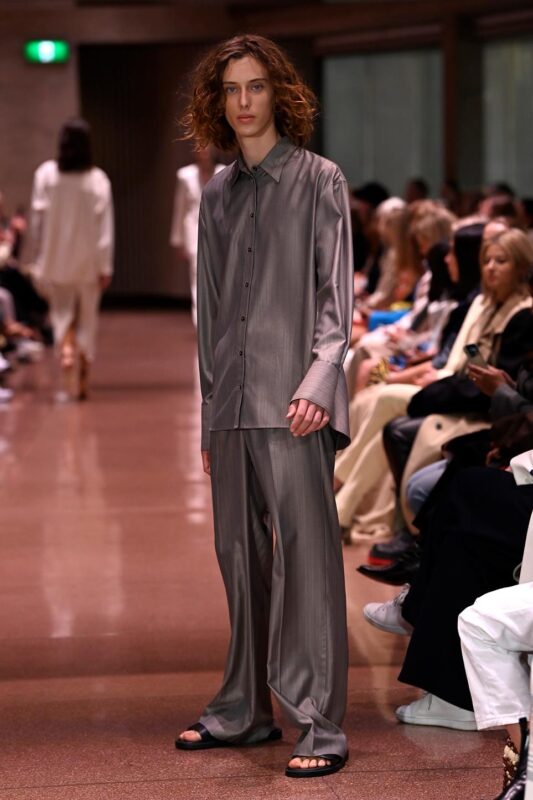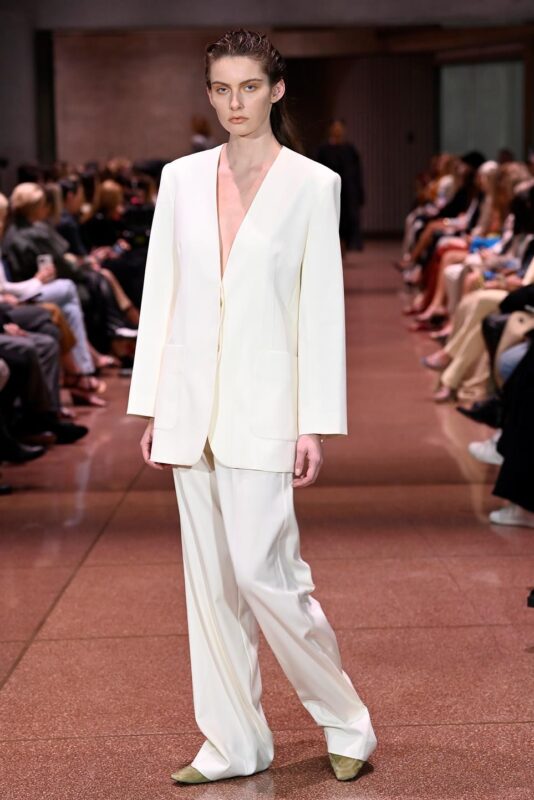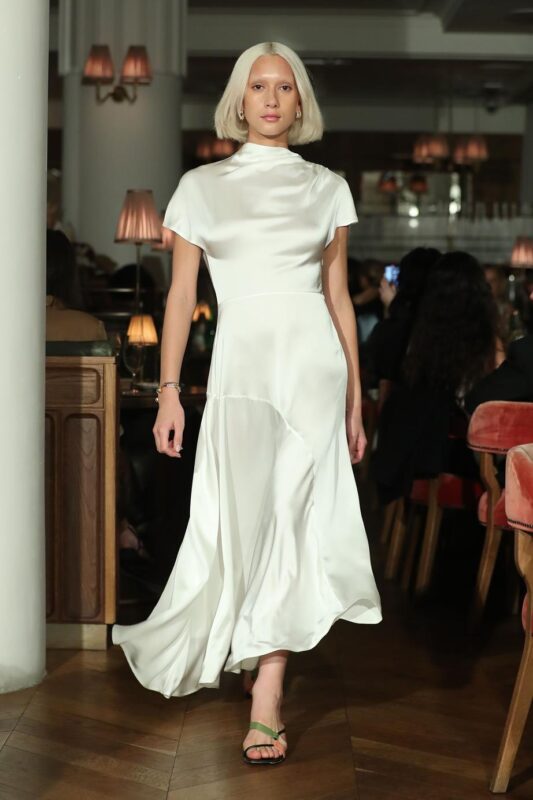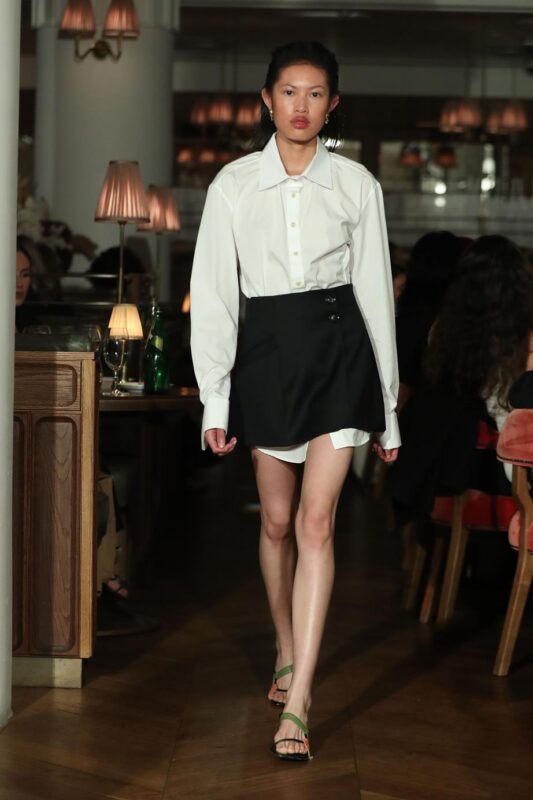Australian Fashion Week has wrapped up another historic year.

This year’s Australian Fashion Week kicked off right as the season switched to winter. AAFW21 was a true indication of how Covid has affected the creative minds of Australian designers. Below, we highlight some of FIB’s highlights from Australia’s biggest fashion event.
Romance Was Born

The RWB runway of 2021 plunged to fantastic depths. Duo Anna Plunkett and Luke Sales served up a presentation for the ages; creating a buzz positioning RWB as a crowd and industry favourite for the year. Perfect casting and RWB’s modernised take on classic concepts ensured an unforgettable Fashion Week moment. RWB presented two new lines, crafted from RWB dead stock and pre-loved vintage pieces. Flashes of beading, reams of ruffling and delightful candy hues illuminated the catwalk.
The ‘Arts and Crafts’ collection blurs the line between grandma’s sewing box and glittery showgirl. The underlying message was one of sustainability, whilst also allowing room for expression-filled beauty and light-hearted fun.
The one-day wedding dress is a thing of the past with ‘RWB Forever’, a new-age bridal collection entirely crafted out of discarded wedding dresses.
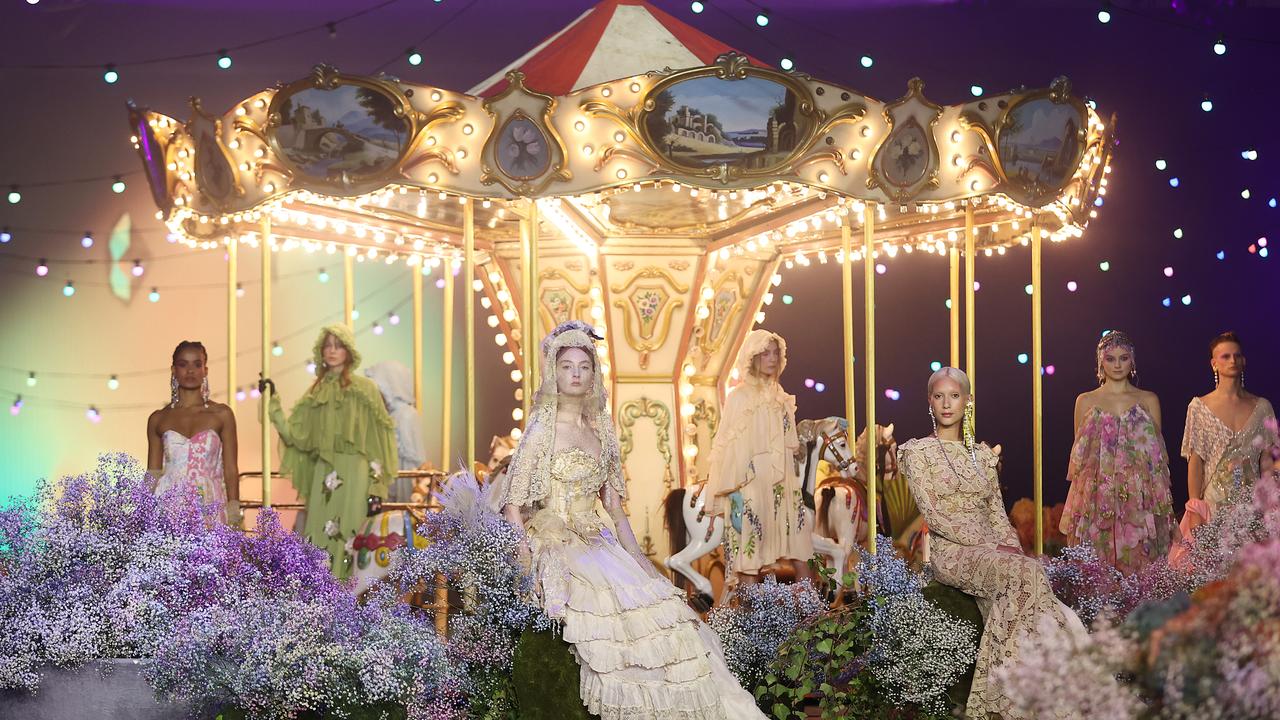
RWB now invites brides to return their pre-worn dresses to be fashioned into something new.
Beare Park
Making its debut at AAFW, Beare Park delighted with understated style. Founders Gabriella Pereira and Angela Krantz impressed with a collection inspired by capsule dressing. Relaxed suiting, sleek silhouettes and monochrome sets walked the runway with an emphasis on versatility within a minimalist aesthetic.
There’s an equal and androgynous tone within Pereira and Krantz’s point of view. The collection’s styles include billowing silk tops and matching pants. These were complemented with oversized blazers and crisp, white, open cuff shirts. The collection complements any gender and will appeal to those looking for a brand that brags inclusivity. Beare Park also hits the sustainability mark, each piece having been meticulously designed to last.
Oroton
Oroton displayed almost-prairie chic with refreshingly clean lines, featherweight summer palettes and nostalgic motifs.
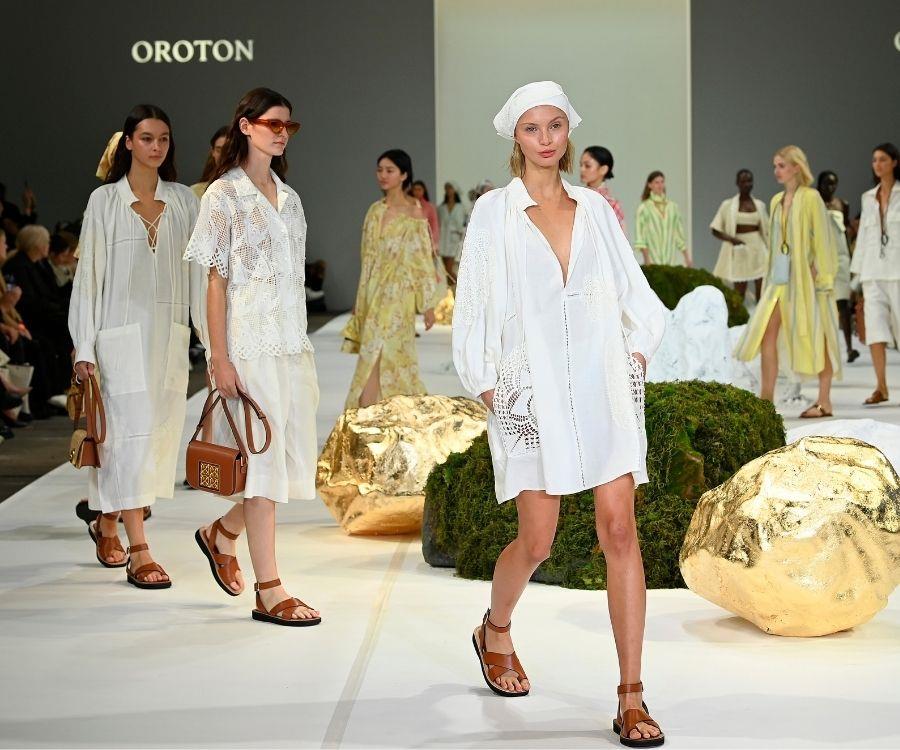
The runway was a beautifully organised tribute to Spring. After a year-long lockdown, Oroton has put forward a stark contrast to the loungewear so many of us have grown accustomed to. Silk and linen were the champion fabrics of the collection, referring fondly to the past whilst firmly establishing a more modernised future.
Anna Quan
Australian designer Anna Huong’s reinterpretations of classic whites have captured the attention of stylists and bloggers globally. Her label, Anna Quan focuses in on refined tailoring. Huong expertly translates more traditional fabrics into easy-to-wear silhouettes. Since Huong’s 2015 debut on the Australian catwalk, Huong has spent years dominating the Australian world of tailored style. Huong’s Resort 22′ collection saw tailored pieces paired with body-hugging knitwear, all part of Huong’s creative vision for the collection.
Huong says (of the collection),
“The last year has been challenging for us all,” she says. “The human spirit is remarkable, restrictions create boundaries, but hope always seems to ignite new ideas and aspirations. My Resort ’22 Collection embraces a concept of ‘revenge dressing’ – an opportunity to wear all the clothes you couldn’t wear during 2020. In a sense, it’s rebellious and celebratory at the same time.”
Source: Elle
Spotlight On First Nations Fashion
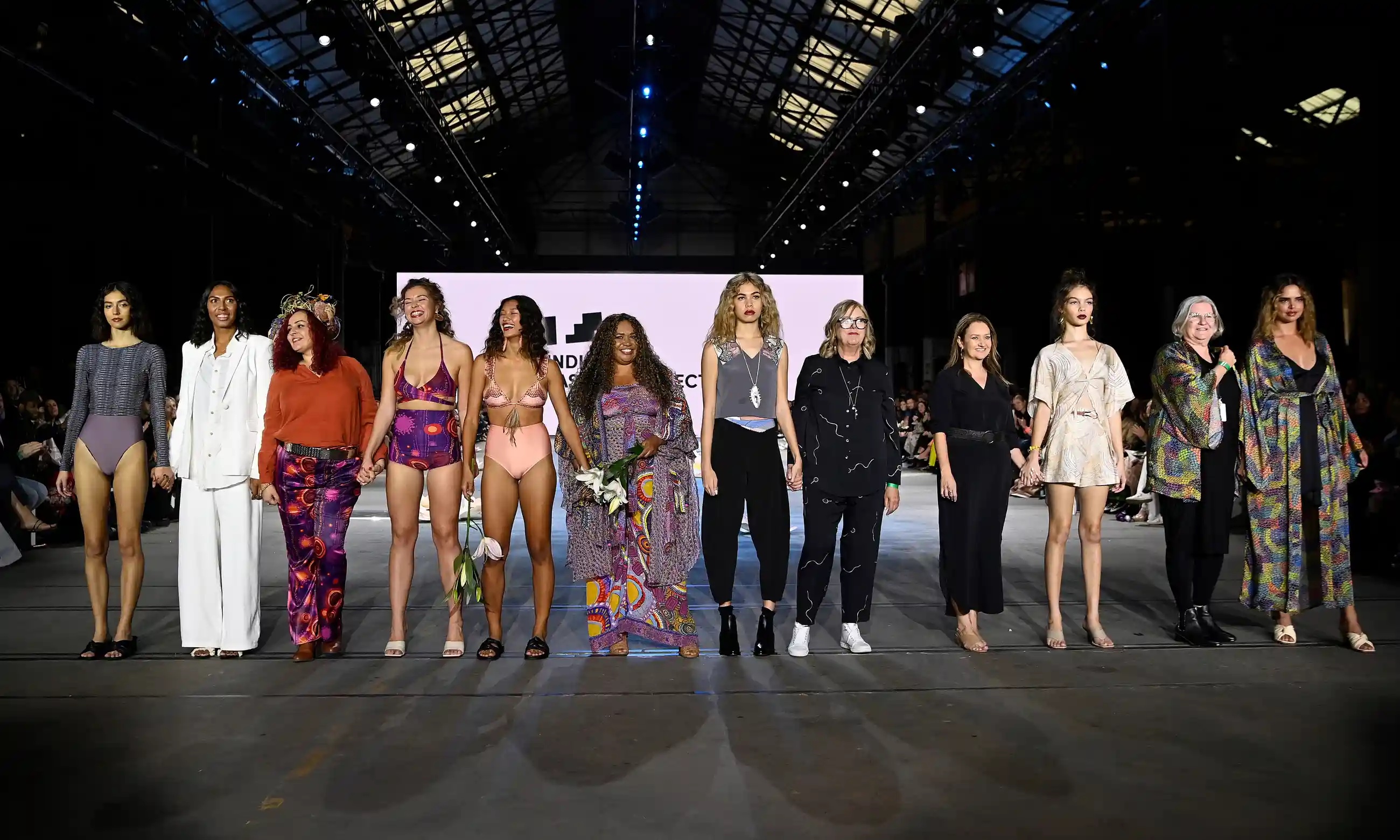
After receipt of a standing ovation on June 2, Grace Lillian Lee and fellow designer Teagan Cowlishaw have been the topic of hot discussion within the industry. The pair made runway history on the AAFW catwalk this year, showcasing only First Nations talent on the catwalk.
Courtney Thompson, features writer & culture editor for Marie Claire said (of the show),
“The First Nations Fashion + Design show was an undeniable stand-out moment. A historic moment for Australian fashion, but also just one of the most uplifting and moving show experiences. The designs were considered, the models were fierce and the performances next level. It was a show that stood for everything fashion can be: joyful, political and moving. The fact it got a rare standing ovation tells you everything you need to know. I get goosebumps just thinking about it now!”
The First Nations Fashion Council also chose to employ only first-nations workers. This included clothing constructors and those working behind the scenes. The duo has been responsible for the establishment and operation of FNFD (First Nations Fashion and Design) on a voluntary basis, close to full time, since 2020. They have both expressed that the project has been years in the making.
“First Nations Fashion and Design is a not-for-profit Indigenous corporation aimed at supporting the growth of the Indigenous fashion industry, with self-determination at the heart of their mission.”
Source: The Guardian
From Little Things, Big Things Grow
The show included two dancers, five artists, 21 models and seven designers. Electric Fields performed a cover of ‘From Little Things, Big Things Grow’. The impressive moment saw dancers pay homage to a historic moment in 1975, when then prime minister Gough Whitlam poured sand into the hand of activist and Gurindji leader Vincent Lingiari.
“This is about the movement of giving our land back to its rightful owners,” Lee said of the gesture. This, too, is atypical for a fashion show.”
Source: The Guardian
The magnificence of the show was met with an audience brought to both tears and their feet at the show’s climax. Amanda Healy, of Kirrikin, who showed as part of the Indigenous Fashion Projects runway on 3 June stated to the Guardian,
“For a long time we’ve been associated with $4.99 boomerangs – no more please.”
Model and design mentor Nathan McGuire said during a panel discussion on Thursday that if the Australian fashion industry wants to progress in its inclusion of First Nations talent, consistency is vital. The Panel was concerned with the growth of the First Nations fashion sector. He pointed out the need for businesses to develop reconciliation action plans and to allow First Nations creatives to “have those moments of autonomy”.
Subscribe to FIB’s Weekly Alchemy Report for your weekly dose of music, fashion and pop culture news!

